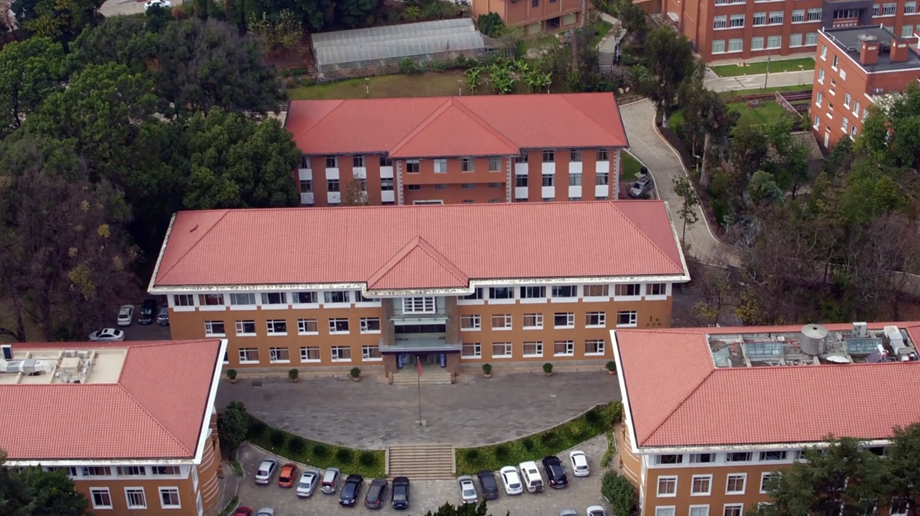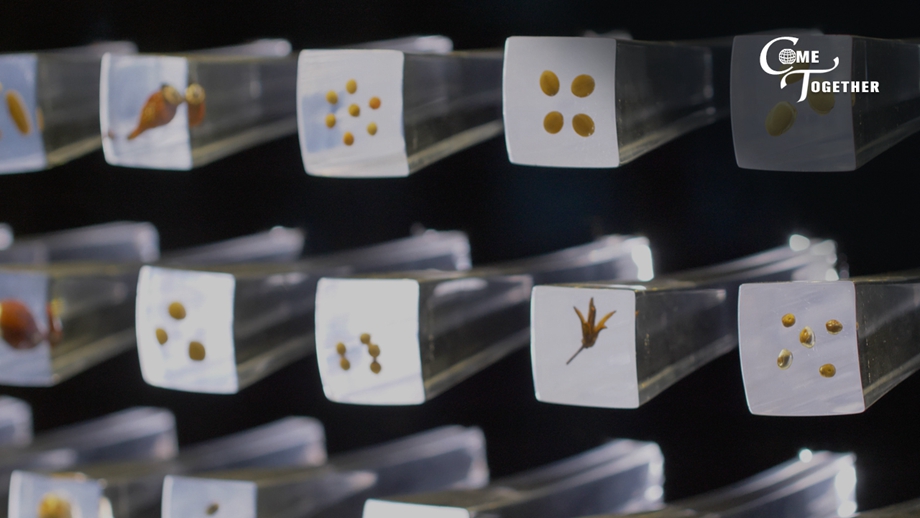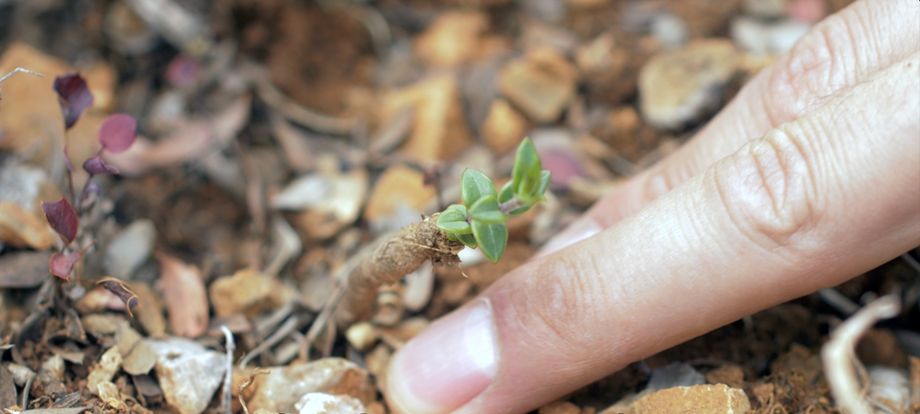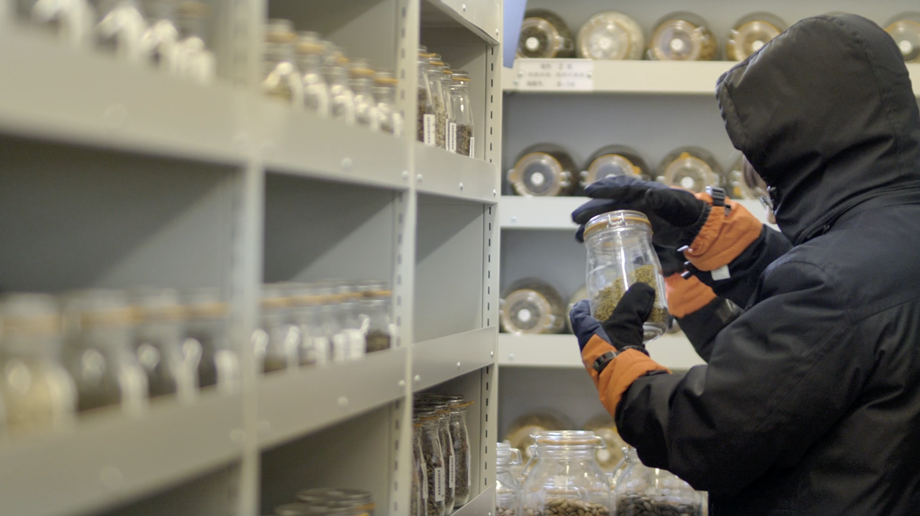The great seed bank in Kunming

Editor's note: China is one of the richest countries in bio-diversity worldwide. As one of its actions to protect bio-diversity, the country established the first national seed bank in 2009, and that is the Germplasm Bank of Wild Species in Kunming, Yunnan province. Thanks to ten plus years of efforts, the seed bank now collects germplasm resources for over 10,000 species, ranking second in the world. On the occasion of the coming fifteenth session of the Conference of the Parties, the UN Convention on Biological Diversity (COP15), let’s look into the Kunming-based Germplasm Bank of Wild Species, exploring the Noah's ark for Chinese plant seeds and knowing about the national protection on bio-diversity.
The great seed bank in Kunming
The seed is the carrier and transmitter for plants’ genetic information, holding the key to botanical reproduction. The germplasm resource is significant in protecting seeds and bio-diversity. As China’s sole seed bank, the Kunming-based Germplasm Bank of Wild Species is worth the attention: What’s the size? What’re the standards for seed selection? And how long can the seeds live here? Let’s take a closer look.
Size of the seed bank
The Germplasm Bank of Wild Species in Kunming is the only national seed bank in China.

The underground cold storage is abundant, and it houses seeds for 10,000 plant species, including the rare or endangered ones such as Chinese dove tree, taxus wallichiana and paraisometrum mileense.
The seed bank is minus 20 degrees Celsius year-round in order to be cool enough for seed to be alive for decades, or even thousands of years. In the event of certain distinction of species, the seeds stored here will be released in the wilderness, so that the dead species can have the chance to “resurrect”. It is safe to say that the seed bank carries the ultimate hope for species to continue surviving.
Since its establishment, the Germplasm Bank has been welcoming new members. At the end of 2020, the bank collects 85,000 seed samples for 10,600 plant species. The seed storage accounted for 36 percent of the total wild plant species nationwide, making it the largest in Asia and the second of its kind globally.
Also, the seed bank stores over 1,000 seed samples from the US, Canada, Brazil and more, increasing the survival rate for more plant species when a catastrophe does come.
“The seed carries our hope,” said Ren Caijie, director of the Seed Storage Center of the Germplasm Bank of Wild Species. The seeds that are sleeping in the “Noah’s ark” is under thoughtful care, awaiting the day to wake up and renew their luster of life.
Standards for seed selection
Only the standard seeds can be admitted to the bank. “We firstly collect the seeds of endangered and special plants, as well as seeds of species of great economic value,” said Qin Shaofa, seed manager at the Germplasm bank.

The extinction of one plant may lead to crisis or even death of tens of related species. So in the protection of bio-diversity and gene-diversity, it is significant to protect the plants with tiny populations, as well as the rare and endangered species.
Then, the endangered and economical seeds will be registered, putting into the computer all the information and setting up a database.
Later, the researchers will dry and clear the seeds, testing and counting their fullness. Before they are finally admitted to the underground cold storage, the seeds will be dried once more. The storage is divided into the fixed section and the dynamic section: The former is the permanent storage of seed backups, while the latter stores the sprout-testing seeds that will be hand out to researchers across the globe.
Therefore, the admitted seeds are separately put into bank sections, going first to the fixed and then to the dynamic. On the basis of the seed sample’s duration, the botanists can estimate how many tests of seed sprouting will be carried out, and the seeds with the corresponding numbers are put into the dynamic section for tests or experiments. Seeds in fixed section are stored intact.
Where to collect the seeds
To ensure the variety of genetic resources, the botanists need to gather seeds of the same species at different locations. Usually, 2,500 to 10,000 seeds should be collected for each plant. For each rare species or species with a small population, a minimum of 500 seed is needed.

“I’m not afraid of the exhausting and time-consuming experiences in seed gathering, and the only thing to fear is that we cannot save all the rare species.” Cai Jie said the seed collectors have left their footprints across China, from the rain forest to the valleys and peaks and from the shore of South China Sea to the Gebi desert in the north. In general, a full-time seed gatherer spends 100 plus days in the fields annually.
Moreover, the seed collectors in the wilderness may come across beasts and venomous snakes, often beaten by fire ants, leeches and wasps.
“At times, even plants are hard to deal with,” recalled Cai. In gathering seeds of D. urentissima chew, he was stung by the plant in his hand and a severe pain spread quickly to his arm and heart, causing difficulty in breath. The swelling lasted for one week, and he was told that the plant venom can be deadly to children.
As is seen in the case, each seed represents risk, sweat and responsibility. “We’ll set out whenever the seed is ripe, and we’ll go wherever the seed exists,” said Cai.
Health checkups for seeds
Even the seed is admitted to the bank, it doesn’t mean everything is done.
“Unlike plants or animals whose health conditions are obvious, seeds are hard to be judged,” said Yang Juan, a seed-sprouting tester. Many seeds are dormant, so their vitality needs testing.

What is more challenging is that the sprouting conditions for 95 percent of plants are unknown, and 80 percent of the seeds from the temperate and arctic zones can be dormant to various degrees.
“We need to care for the seeds the way a mom looks after the baby.” Yang said she designed three to five sprouting experiments for each seed sample, and she gathered the testing data on weekly basis so that the best experimental conditions could be dug out.
A second sprouting experiment needs to be carried out in five to ten years to identify the changes of the admitted seeds in vitality. Once the sprouting rate is less than 75 percent, the seeds need to be bred or replaced by new ones in the fields.
Seed life expectancy
Entering the seed bank, visitors were greeted by arrays of sealed glass bottles, and the bottle sizes vary according to those of the seeds.

Here, the key factors for seed storage are temperature and humidity. In general, the seeds’ life expectancy will be doubled by either lowering the temperature by 5 degrees Celsius or cutting the seed moisture content by 1 percent.
Corns stored at the 15℃ temperature and 73 percent humidity, for example, will lose the vitality to be the seed in 145 days. However, the Kunming seed bank creates the -20℃ temperature and 15 percent humidity environment, where corns can maintain the vitality for 460 years. In the same way, the wheat vitality will be extended from 99 days to 786 years, rice from 241 days to 1,139 years, soybeans 193 days to 214 years and finally, cotton seeds from five years to 17,076 years.
Further reading
Why is China’s first national seed bank built in Yunnan? Because Yunnan has the richest germplasm resources among the Chinese provinces, and it boasts 16,000 plants, 1,704 vertebrates and 100,500 insects, accounting for 50 percent, 55 percent and 67 percent of the national totals respectively.
Source: Yunnan Tourism and Culture Times; CGTN photos; Trans-editing by Wang Shixue